“When I bought the site, it was completely overgrown,” says Nesta Tjong A Hung as she wipes her hands on her dungarees. Nesta, a former pastoral worker and now 75, built a safe haven for children 25 years ago with her savings: Mariahoeve. What started as a modest home has grown into a center where not only love and care but also vegetables flourish. Nesta believes every child should eat 10 tablespoons of vegetables a day. In Suriname, vegetables are expensive, and this was the highest cost in maintaining the children. So Nesta and her husband John decided to grow their own.
 © Pieter Boekhout | HortiDaily.com
© Pieter Boekhout | HortiDaily.com
The glass greenhouse, which previously stood at the Floriade in the Netherlands, was personally donated by horticultural entrepreneur Rob Baan
Armed with a machete and plenty of perseverance, she began clearing the grounds. “As soon as a piece was free, I planted something. Otherwise, the weeds would just grow back.” Step by step, a self-sufficient vegetable garden took shape, which today provides food not only for the 21 children of the shelter but also for underprivileged children from a nearby school.
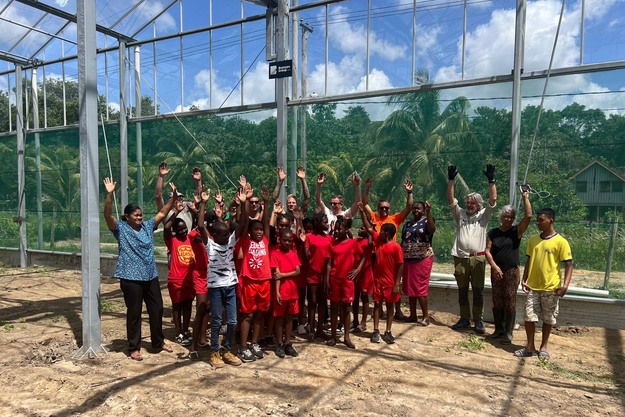 © Rob BaanThe opening of the greenhouse by the children
© Rob BaanThe opening of the greenhouse by the children
At first, Nesta worked with open-field cultivation. “But in a greenhouse, you can keep the rain and insects out and provide shade,” she says. So she built a wooden greenhouse, but the flat roof couldn’t withstand the tropical rains. “Those just collapsed it. Then I made the roof V-shaped for better drainage.”
Later, help came from outside. With support from the United Nations Development Program, A Better World Foundation, and the ONS Foundation, among others, sturdier greenhouses were built. The showpiece, however, is a glass greenhouse that previously stood at the Floriade in the Netherlands, personally donated by horticultural entrepreneur Rob Baan, chairman of the ONS Foundation. “He not only provided the greenhouse but also funded the preparatory works,” beams Nesta.
And it’s a remarkable glasshouse: a 14-meter-high one, specially built for the event. “Greenhouses are normally 7 to 8 meters high, so 14 meters is almost double that. Let’s just say it’s quite exceptional”, the builders explained at the time.
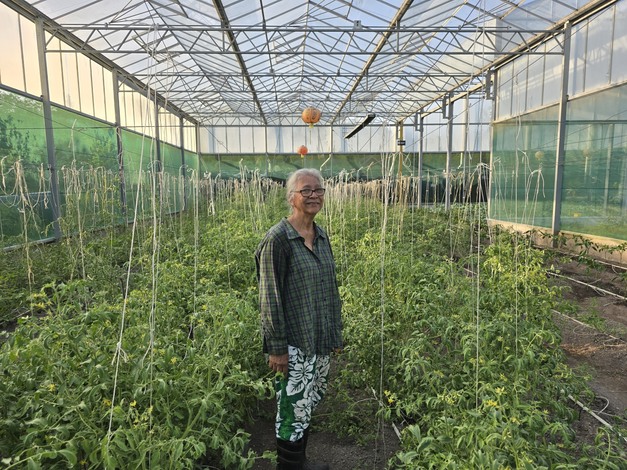 © Pieter Boekhout | HortiDaily.com
© Pieter Boekhout | HortiDaily.com
Most of the harvest goes to the children of the home and school. What remains, Nesta sells to fund seeds, potting soil, and other materials
Gardening as a life lesson
Every day, Nesta and her husband work in the garden, from eight to one and again from four to seven. “As long as I can, I work,” she says with determination. Even after successfully overcoming colon cancer five years ago, her dedication remains unwavering. The children also take part. They learn how to sow, weed, and harvest, and how to give PET bottles a second life as plant pots. “This way, they not only learn gardening but also sustainability in practice,” she says.
Most of the harvest goes to the children of the home and the nearby school. What remains is sold by Nesta to pay for seeds, potting soil, and other supplies. Almost everything is grown according to organic principles, though experimentation with varieties remains essential. “Dutch tomato varieties struggle here. The Indian Cobra tomato, on the other hand, lasts through an entire growing cycle.”
 © Rob Baan
© Rob Baan
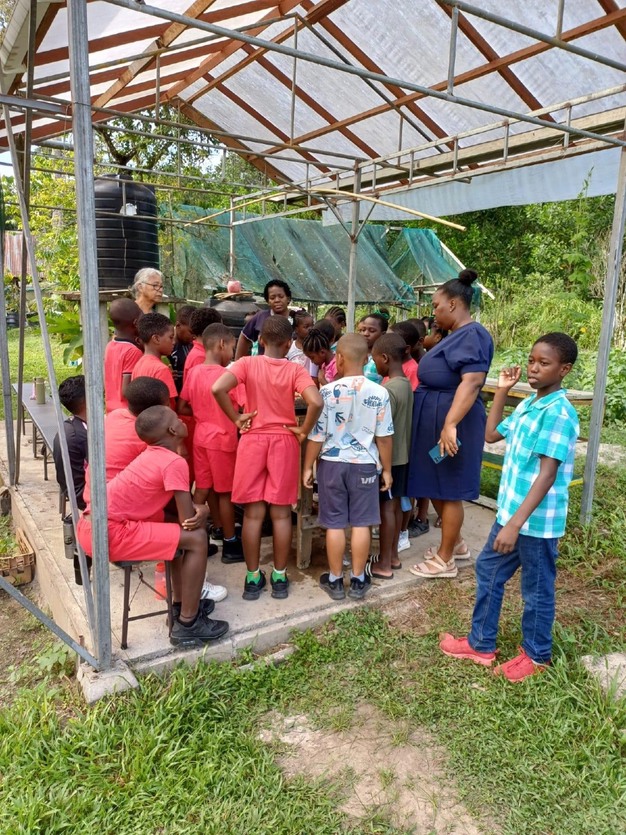 © Pieter Boekhout | HortiDaily.com
© Pieter Boekhout | HortiDaily.com
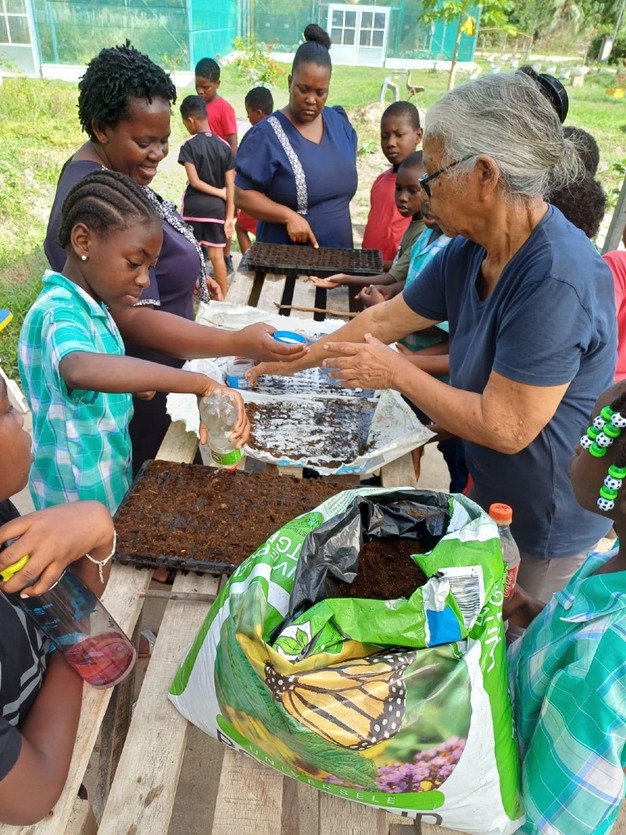 © Pieter Boekhout | HortiDaily.com
© Pieter Boekhout | HortiDaily.com
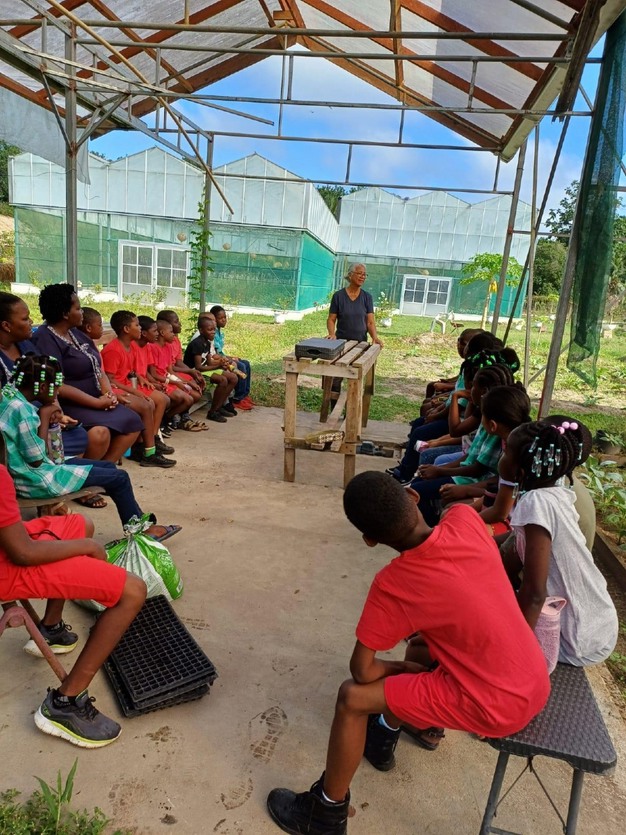 © Pieter Boekhout | HortiDaily.com
© Pieter Boekhout | HortiDaily.com
 © Pieter Boekhout | HortiDaily.com
© Pieter Boekhout | HortiDaily.com
For more information:
Nesta Tjong A Hung
Kinderhuis Mariahoeve
Lelydorp (Suriname)

